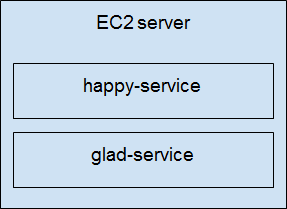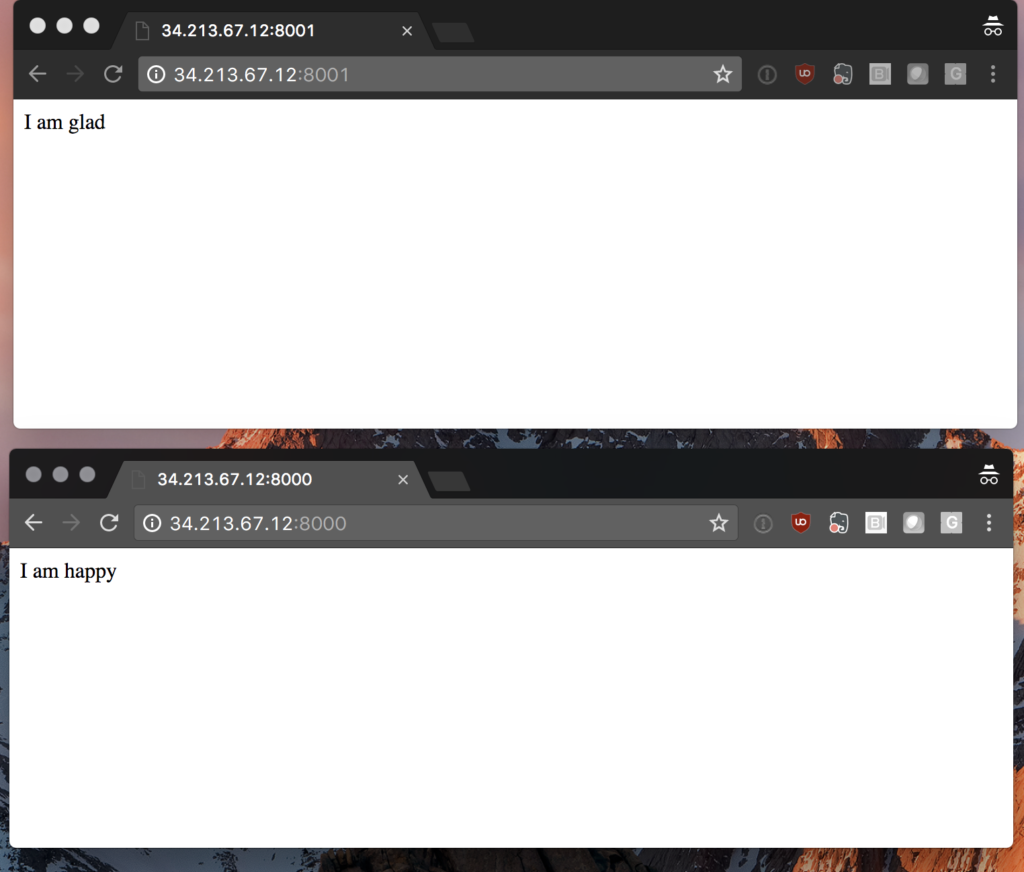Continuous Delivery of Everything with Rancher, Drone, and Terraform
It’s 8:00 PM. I just deployed to production, but nothing’s working.
Oh, wait. the production Kinesis stream doesn’t exist, because the
CloudFormation template for production wasn’t updated. Okay, fix that.
9:00 PM. Redeploy. Still broken. Oh, wait. The production config file
wasn’t updated to use the new database. Okay, fix that. Finally, it
works, and it’s time to go home. Ever been there? How about the late
night when your provisioning scripts work for updating existing servers,
but not for creating a brand new environment? Or, a manual deployment
step missing from a task list? Or, a config file pointing to a resource
from another environment? Each of these problems stems from separating
the activity of provisioning infrastructure from that of deploying
software, whether by choice, or limitation of tools. The impact of
deploying should be to allow customers to benefit from added value or
validate a business hypothesis. In order to accomplish this,
infrastructure and software are both needed, and they normally change
together. Thus, a deployment can be defined as:
- reconciling the infrastructure needed with the infrastructure that
already exists; and - reconciling the software that we want to run with the software that
is already running.
With Rancher, Terraform, and Drone, you can build continuous delivery
tools that let you deploy this way. Let’s look at a sample system:
 This simple
This simple
architecture has a server running two microservices,
[happy-service]
and
[glad-service].
When a deployment is triggered, you want the ecosystem to match this
picture, regardless of what its current state is. Terraform is a tool
that allows you to predictably create and change infrastructure and
software. You describe individual resources, like servers and Rancher
stacks, and it will create a plan to make the world match the resources
you describe. Let’s create a Terraform configuration that creates a
Rancher environment for our production deployment:
provider "rancher" {
api_url = "${var.rancher_url}"
}
resource "rancher_environment" "production" {
name = "production"
description = "Production environment"
orchestration = "cattle"
}
resource "rancher_registration_token" "production_token" {
environment_id = "${rancher_environment.production.id}"
name = "production-token"
description = "Host registration token for Production environment"
}
Terraform has the ability to preview what it’ll do before applying
changes. Let’s run terraform plan.
+ rancher_environment.production
description: "Production environment"
...
+ rancher_registration_token.production_token
command: "<computed>"
...
The pluses and green text indicate that the resource needs to be
created. Terraform knows that these resources haven’t been created yet,
so it will try to create them. Running terraform apply creates the
environment in Rancher. You can log into Rancher to see it. Now let’s
add an AWS EC2 server to the environment:
# A look up for rancheros_ami by region
variable "rancheros_amis" {
default = {
"ap-south-1" = "ami-3576085a"
"eu-west-2" = "ami-4806102c"
"eu-west-1" = "ami-64b2a802"
"ap-northeast-2" = "ami-9d03dcf3"
"ap-northeast-1" = "ami-8bb1a7ec"
"sa-east-1" = "ami-ae1b71c2"
"ca-central-1" = "ami-4fa7182b"
"ap-southeast-1" = "ami-4f921c2c"
"ap-southeast-2" = "ami-d64c5fb5"
"eu-central-1" = "ami-8c52f4e3"
"us-east-1" = "ami-067c4a10"
"us-east-2" = "ami-b74b6ad2"
"us-west-1" = "ami-04351964"
"us-west-2" = "ami-bed0c7c7"
}
type = "map"
}
# this creates a cloud-init script that registers the server
# as a rancher agent when it starts up
resource "template_file" "user_data" {
template = <<EOF
#cloud-config
write_files:
- path: /etc/rc.local
permissions: "0755"
owner: root
content: |
#!/bin/bash
for i in {1..60}
do
docker info && break
sleep 1
done
sudo docker run -d --privileged -v /var/run/docker.sock:/var/run/docker.sock -v /var/lib/rancher:/var/lib/rancher rancher/agent:v1.2.1 $${registration_url}
EOF
vars {
registration_url = "${rancher_registration_token.production_token.registration_url}"
}
}
# AWS ec2 launch configuration for a production rancher agent
resource "aws_launch_configuration" "launch_configuration" {
provider = "aws"
name = "rancher agent"
image_id = "${lookup(var.rancheros_amis, var.terraform_user_region)}"
instance_type = "t2.micro"
key_name = "${var.key_name}"
user_data = "${template_file.user_data.rendered}"
security_groups = [ "${var.security_group_id}"]
associate_public_ip_address = true
}
# Creates an autoscaling group of 1 server that will be a rancher agent
resource "aws_autoscaling_group" "autoscaling" {
availability_zones = ["${var.availability_zones}"]
name = "Production servers"
max_size = "1"
min_size = "1"
health_check_grace_period = 3600
health_check_type = "ELB"
desired_capacity = "1"
force_delete = true
launch_configuration = "${aws_launch_configuration.launch_configuration.name}"
vpc_zone_identifier = ["${var.subnets}"]
}
We’ll put these in the same directory as environment.tf, and run
terraform plan again:
+ aws_autoscaling_group.autoscaling
arn: ""
...
+ aws_launch_configuration.launch_configuration
associate_public_ip_address: "true"
...
+ template_file.user_data
...
This time, you’ll see that rancher_environment resources is missing.
That’s because it’s already created, and Rancher knows that it
doesn’t have to create it again. Run terraform apply, and after a few
minutes, you should see a server show up in Rancher. Finally, we want to
deploy the happy-service and glad-service onto this server:
resource "rancher_stack" "happy" {
name = "happy"
description = "A service that's always happy"
start_on_create = true
environment_id = "${rancher_environment.production.id}"
docker_compose = <<EOF
version: '2'
services:
happy:
image: peloton/happy-service
stdin_open: true
tty: true
ports:
- 8000:80/tcp
labels:
io.rancher.container.pull_image: always
io.rancher.scheduler.global: 'true'
started: $STARTED
EOF
rancher_compose = <<EOF
version: '2'
services:
happy:
start_on_create: true
EOF
finish_upgrade = true
environment {
STARTED = "${timestamp()}"
}
}
resource "rancher_stack" "glad" {
name = "glad"
description = "A service that's always glad"
start_on_create = true
environment_id = "${rancher_environment.production.id}"
docker_compose = <<EOF
version: '2'
services:
glad:
image: peloton/glad-service
stdin_open: true
tty: true
ports:
- 8000:80/tcp
labels:
io.rancher.container.pull_image: always
io.rancher.scheduler.global: 'true'
started: $STARTED
EOF
rancher_compose = <<EOF
version: '2'
services:
glad:
start_on_create: true
EOF
finish_upgrade = true
environment {
STARTED = "${timestamp()}"
}
}
This will create two new Rancher stacks; one for the happy service and
one for the glad service. Running terraform plan once more will show
the two Rancher stacks:
+ rancher_stack.glad
description: "A service that's always glad"
...
+ rancher_stack.happy
description: "A service that's always happy"
...
And running terraform apply will create them. Once this is done,
you’ll have your two microservices deployed onto a host automatically
on Rancher. You can hit your host on port 8000 or on port 8001 to see
the response from the services:
 We’ve created each
We’ve created each
piece of the infrastructure along the way in a piecemeal fashion. But
Terraform can easily do everything from scratch, too. Try issuing a
terraform destroy, followed by terraform apply, and the entire
system will be recreated. This is what makes deploying with Terraform
and Rancher so powerful – Terraform will reconcile the desired
infrastructure with the existing infrastructure, whether those resources
exist, don’t exist, or require modification. Using Terraform and
Rancher, you can now create the infrastructure and the software that
runs on the infrastructure together. They can be changed and versioned
together, too. In the future blog entries, we’ll look at how to
automate this process on git push with Drone. Be sure to check out the
code for the Terraform configuration are hosted on
[github].
The
[happy-service]
and
[glad-service]
are simple nginx docker containers. Bryce Covert is an engineer at
pelotech. By day, he helps teams accelerate
engineering by teaching them functional programming, stateless
microservices, and immutable infrastructure. By night, he hacks away,
creating point and click adventure games. You can find pelotech on
Twitter at @pelotechnology.
Related Articles
Mar 25th, 2024
Announcing the Harvester v1.3.0 release
Mar 14th, 2023
Longhorn 1.4.1
Jan 05th, 2024
Announcing the Rancher Kubernetes API
Mar 15th, 2024